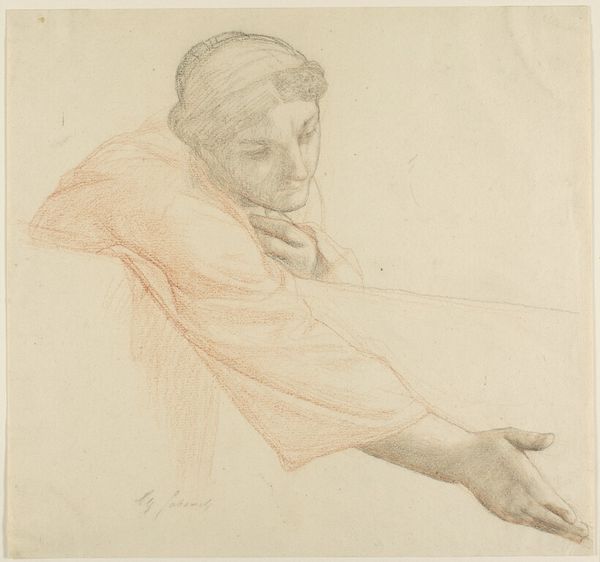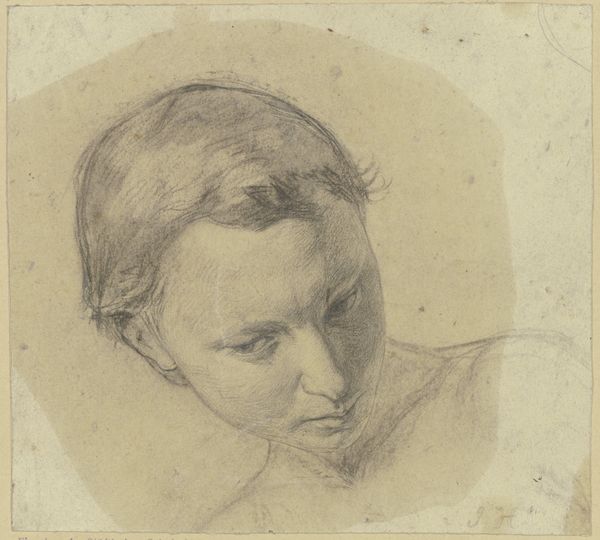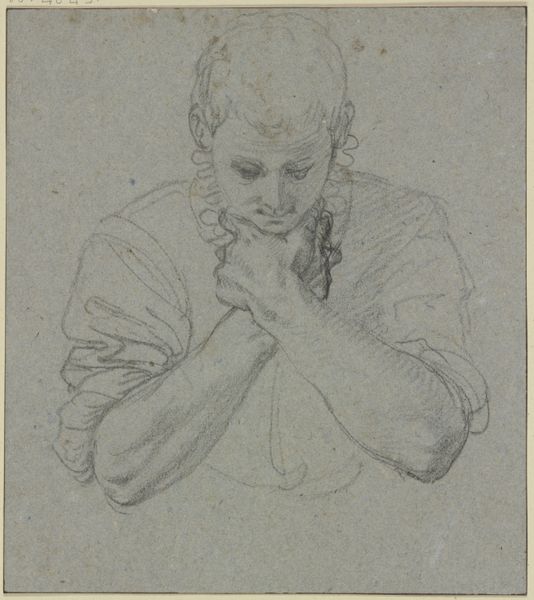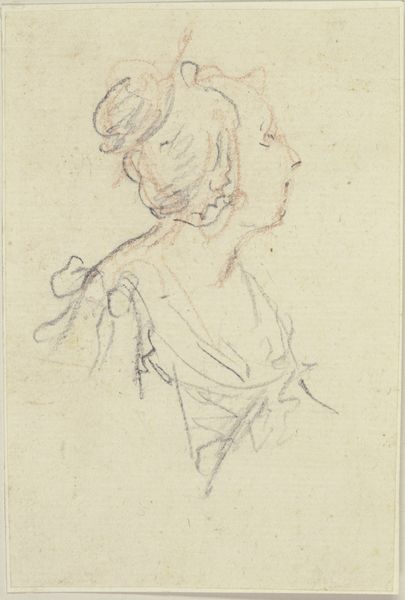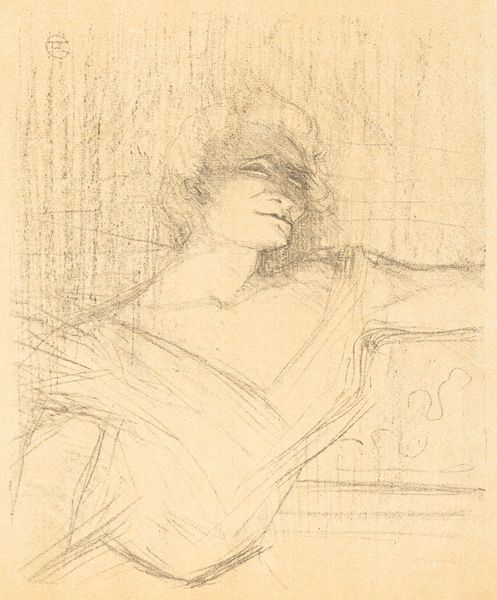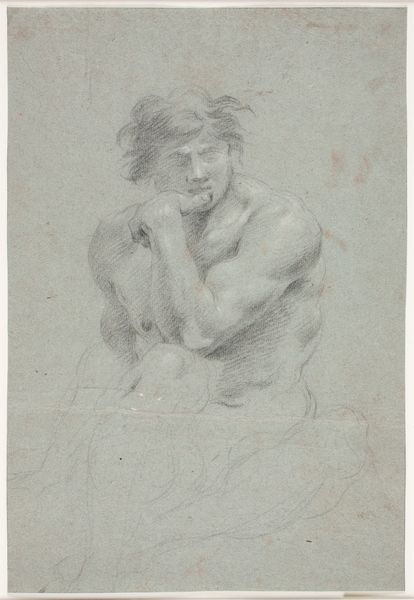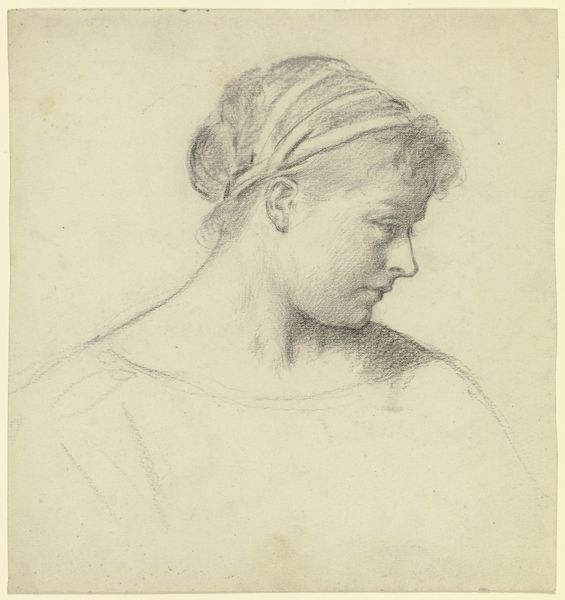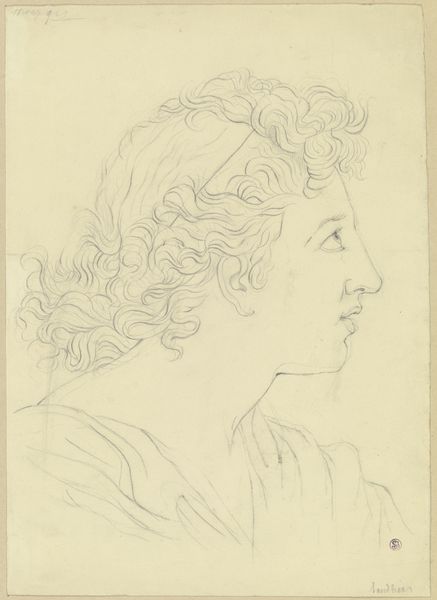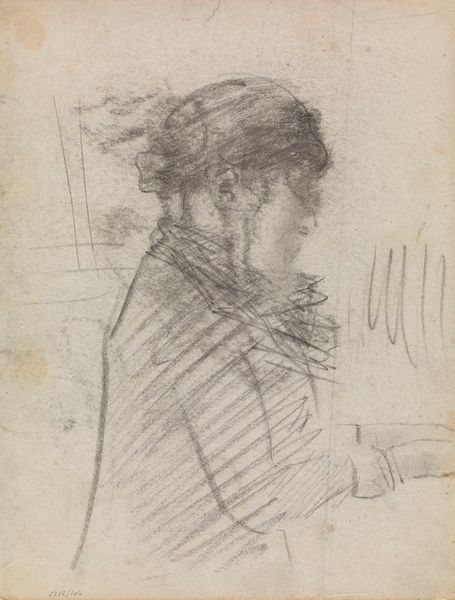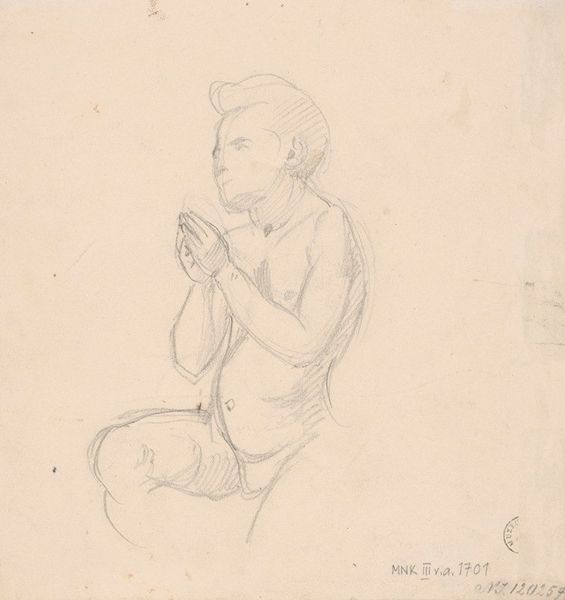
drawing, pencil
#
drawing
#
16_19th-century
#
figuration
#
german
#
pencil drawing
#
romanticism
#
pencil
#
portrait drawing
#
academic-art
Copyright: Public Domain
Editor: Here we have "Junger Mann mit zusammengelegten Händen," which translates to "Young Man with Folded Hands." It's an early 19th-century pencil drawing, so we're dealing with very humble materials. I’m struck by its raw, almost unfinished quality, despite its clear aspirations toward academic precision. What stands out to you? Curator: For me, this drawing invites consideration of the role of material in art education during the Romantic period. Pencil, readily available and inexpensive, became the primary medium for students developing their draftsmanship. This shift democratized art training by changing art from something elite into something accessible to common people, impacting ideas around fine art, craft, labor, and skill. Editor: Democratization through materials, that's interesting. So, are you suggesting that the drawing's apparent lack of finish could be less about skill and more about the accepted material practices within academic art at the time? Curator: Exactly. Consider the status assigned to drawing. Was it seen merely as preparation for more 'serious' work like painting? What assumptions are we making when we deem the visible pentimenti 'unfinished'? Maybe the artist wanted us to see his thinking process, highlighting his skills of hand and eye. Or the point was about instruction, a teaching drawing. Editor: I never considered that "unfinished" could be a choice or linked to pedagogy, instead of failure. Thank you for helping me consider new perspective. Curator: It’s fascinating how seemingly simple materials can carry so much historical weight. I’m glad we looked closer.
Comments
No comments
Be the first to comment and join the conversation on the ultimate creative platform.
